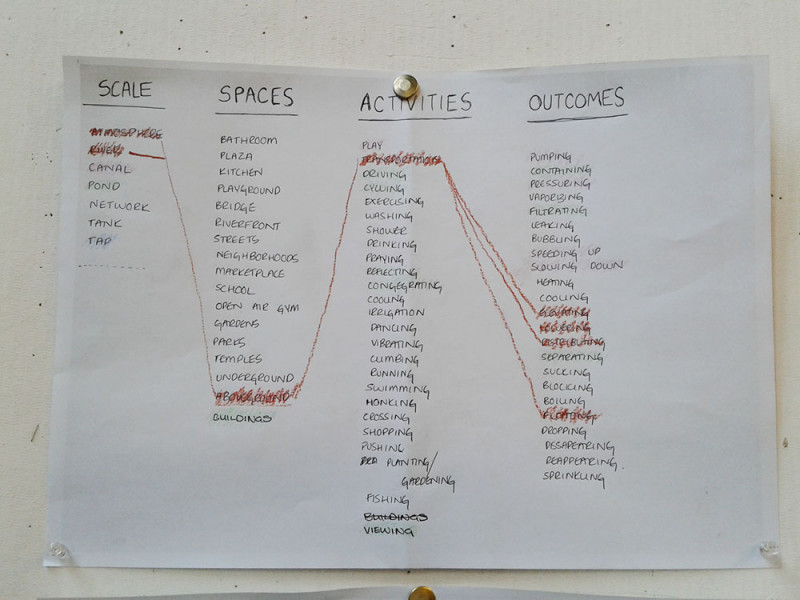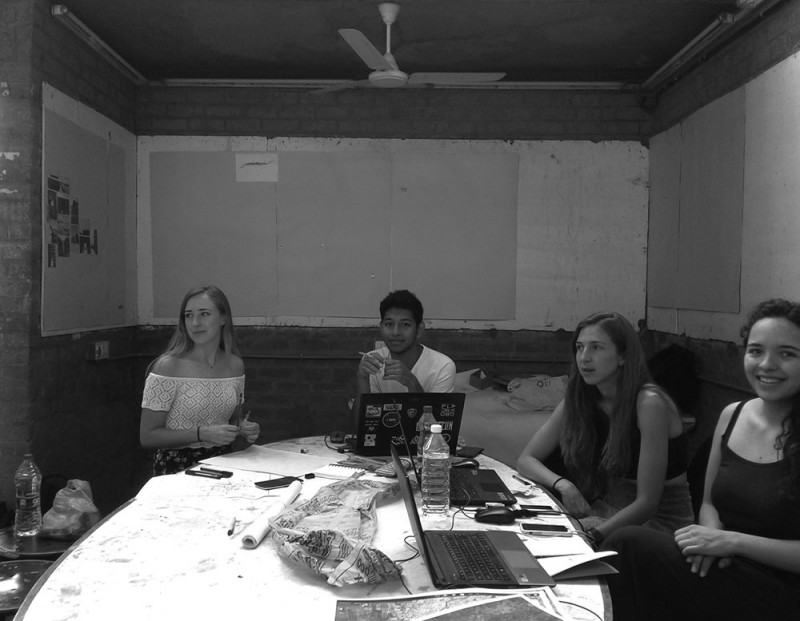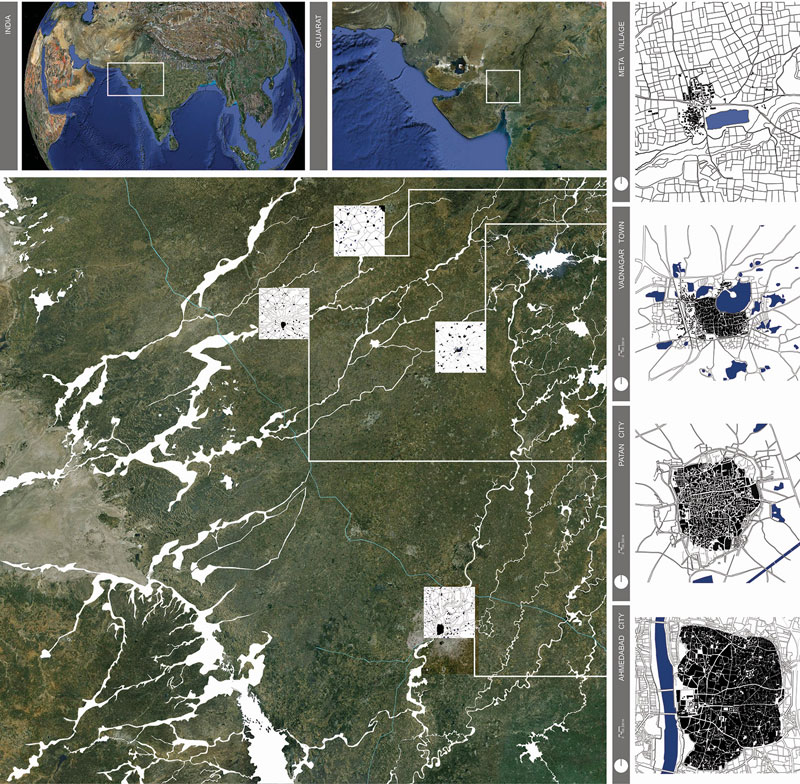Jul 5, 2017
Participants group 11
Feb 9, 2017
Ahmedabad has a hot, semi-arid climate. Although average annual rainfall is about 800 millimetres, the city and hinterland suffer from water problems. The Sabarmati River that runs through the city frequently dries up in summer. Water programmes like the Sabarmati River Front Project and Embankment, and diversions of other rivers have been carried out to prevent the Sabarmati from falling dry. Still, the river is highly polluted. Another problem is the desertification that threatens the city area. A network of canals is planned to stop this problem. These days the ethics and aesthetics of water are political. Are there other ways to solve these problems?
Research has been done into the meaning of water for the city, and its different relations with the city, by looking at cultural and social attitudes towards water. What associations can one have with streaming water? The workshop focused on four different levels: geography, urban scale, community scale, and domestic scale.
The structure of a city is determined by water. How can water be used as a tool for strategic design decisions that are more inclusive?

Feb 6, 2017

Feb 5, 2017
work in progress - Rachel, Dennis, Camila, and Andrea

Nov 22, 2016
Water and the City
In an arid, undulating landscape like the one Ahmedabad finds itself in, water which attracts settlement and place, is a temporal phenomenon. Rivers, lakes and tanks follow a rhythm of seasonal abundance and disappearance. Ground water is seen to be both purer and more permanent. The structures built to access and collect it, anchor settlement and place in more persistent ways to geography. The region around Ahmedabad has a long history of building numerous types of water structures both urban and agricultural, for both surface and ground water that serve social and individual needs.
In the present day urban scape, the supply and disposal of water has largely become a practical infrastructural enterprise. Mostly it is managed by the state and its reservoirs and flows are invisible within our physical environment. The ethics and aesthetic of water are now political.
The workshop will assume that architecture and urbanism have the potential and power to re-instate water with social purpose. The workshop will study cultural attitudes to water and traditional water structures. The inquiry will involve a range of scales from the personal to the geographic. Local experts engaged with the issue of water in a variety of ways will be invited for guest inputs throughout the workshop.
Participants will be required to design a water structure for the contemporary city of Ahmedabad, keeping in mind our present day environmental crisis. A broad outline of the workshop will be as follows:
Part 1: Observation and Identification
Part 2: Engagements and Documentation
Part 3: Representation Exercises
Part 4: Intervention Proposal





